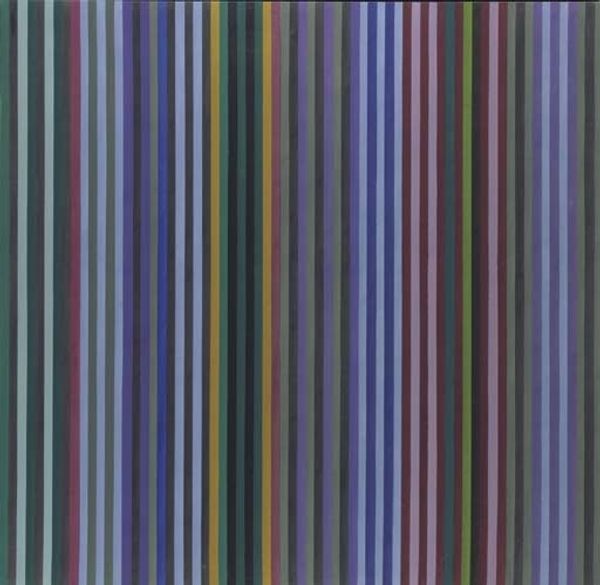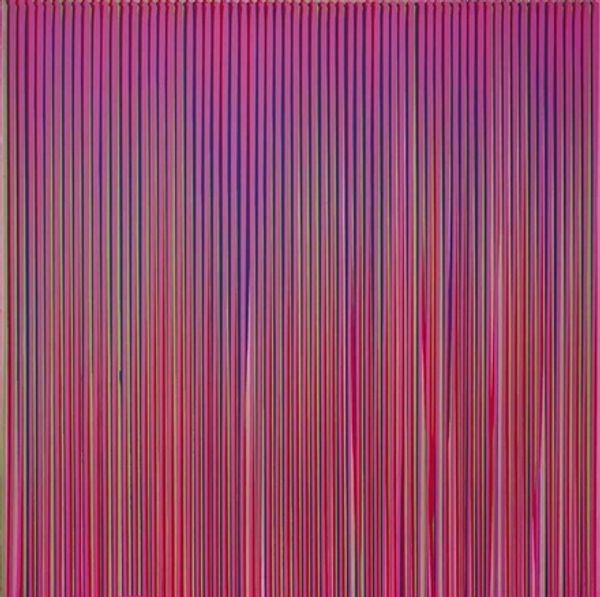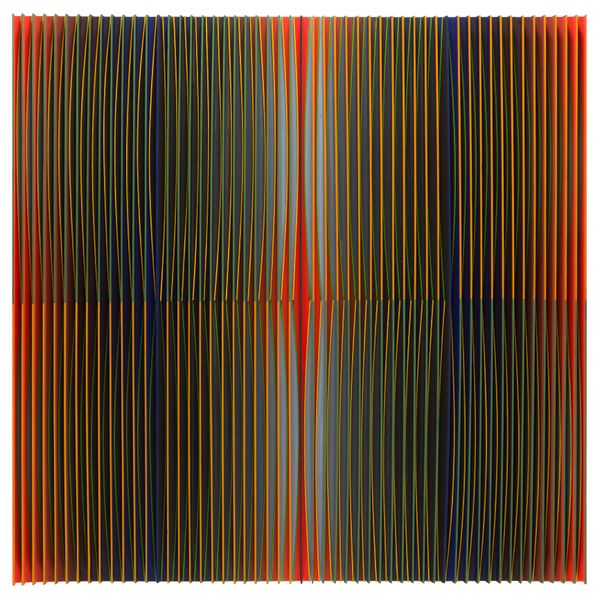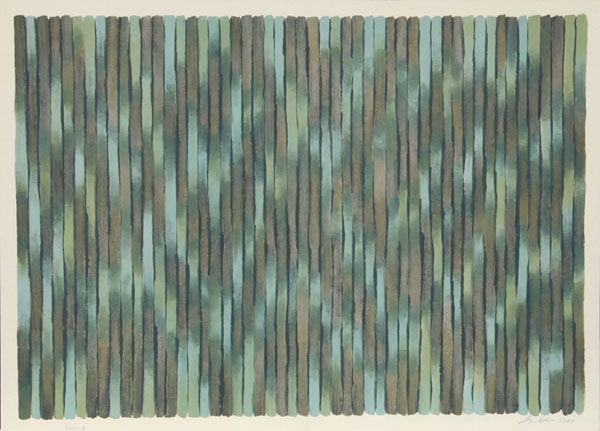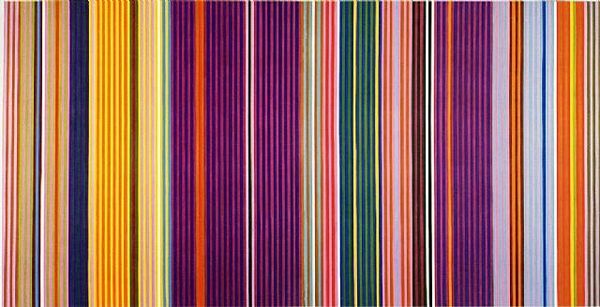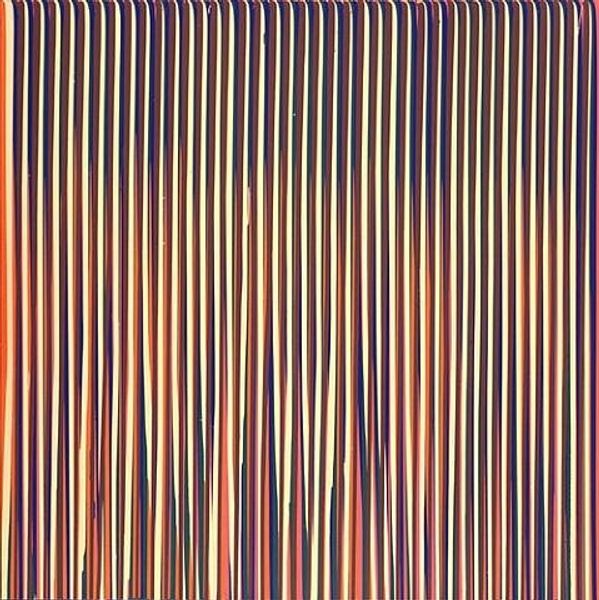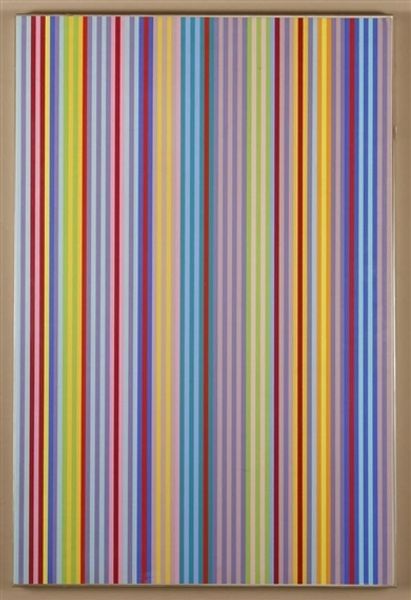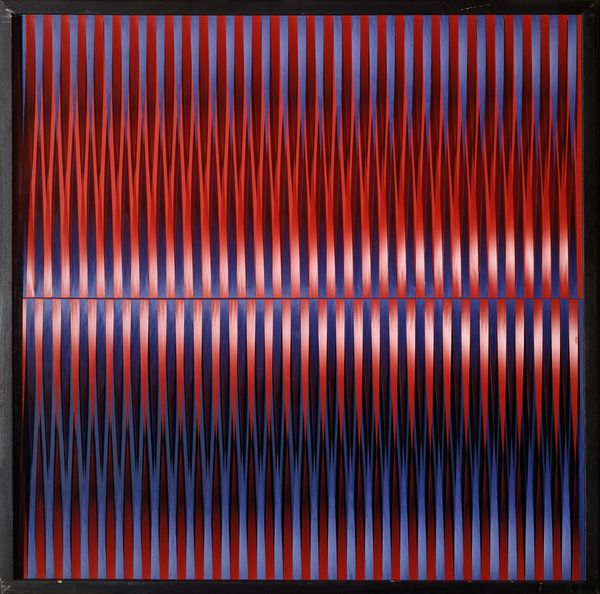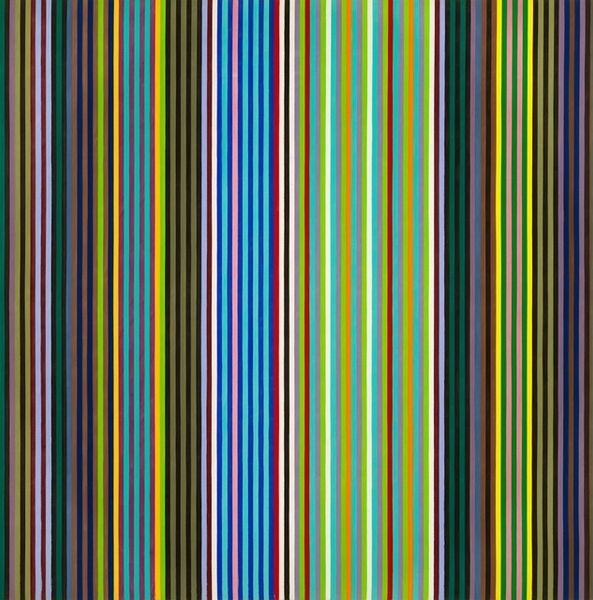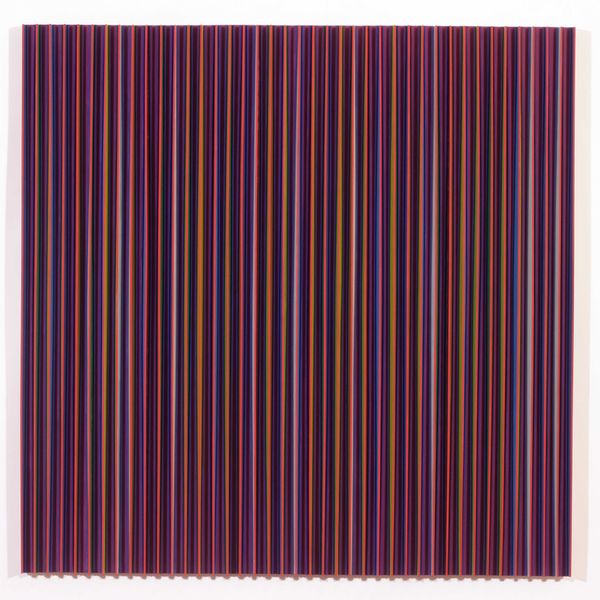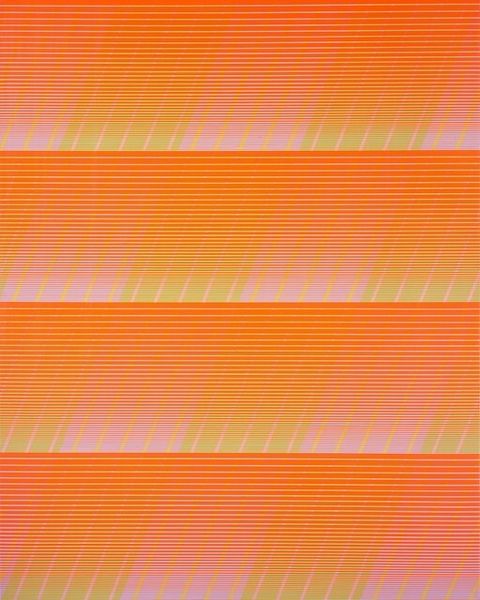
serial-art
#
abstract expressionism
#
serial-art
#
geometric
#
abstraction
#
line
#
modernism
#
hard-edge-painting
Dimensions: 200 x 200 cm
Copyright: Andrzej Nowacki,Fair Use
Curator: Looking at "24.11.16," created in 2016 by Andrzej Nowacki, I'm immediately struck by its optical vibration, and also a sort of meditative calmness. Editor: Meditative is a good word. What interests me about Nowacki's work is how it fits within a lineage of serial art practices – we see the legacy of hard-edge painting, and the cool detachment associated with modernism, being reworked within a contemporary Polish art scene grappling with its own history of abstraction under Soviet influence. Curator: Yes, and I find myself wondering about this title. What happened on November 24th, 2016? I question the decision to ground an otherwise fairly abstract work in a very specific moment. It makes me wonder if this has personal significance. Or, perhaps, is it Nowacki simply marking the day he completed it to subvert our desire for meaning, leaving us to project whatever socio-political meanings we want onto the piece? Editor: I agree, the title adds a layer of intrigue. From a historical perspective, serial works like these also challenge the very notion of artistic authorship. By repeating a basic unit, in this case a series of vertically oriented lines, Nowacki explores mass production and potentially critiques the commodification of art. This repetition moves us to consider the broader context of production, labor, and how artistic meaning is constructed within economic systems. Curator: And what about the interplay between order and chaos within each panel? The lines are rigid, structured, but the colour choices produce unpredictable relationships. Are we supposed to interpret these relationships and find larger meaning? Maybe we should zoom out to examine Nowacki's place within conversations about abstraction in post-communist Eastern Europe? There's the sense that Nowacki is self-consciously playing with and against these formal artistic traditions to explore questions about cultural and personal identity, or a lack of it. Editor: Precisely. In many ways it can also make us ask ourselves: where is this art supposed to be displayed? How does the gallery’s or museum’s architecture shape its presentation and reception? After all, how a work engages with public and private spaces shapes its political message, intended or not. Curator: True, it's that tension between artistic intention and societal interpretation that makes this so compelling. Editor: Indeed, and considering that adds even more depth.
Comments
No comments
Be the first to comment and join the conversation on the ultimate creative platform.
